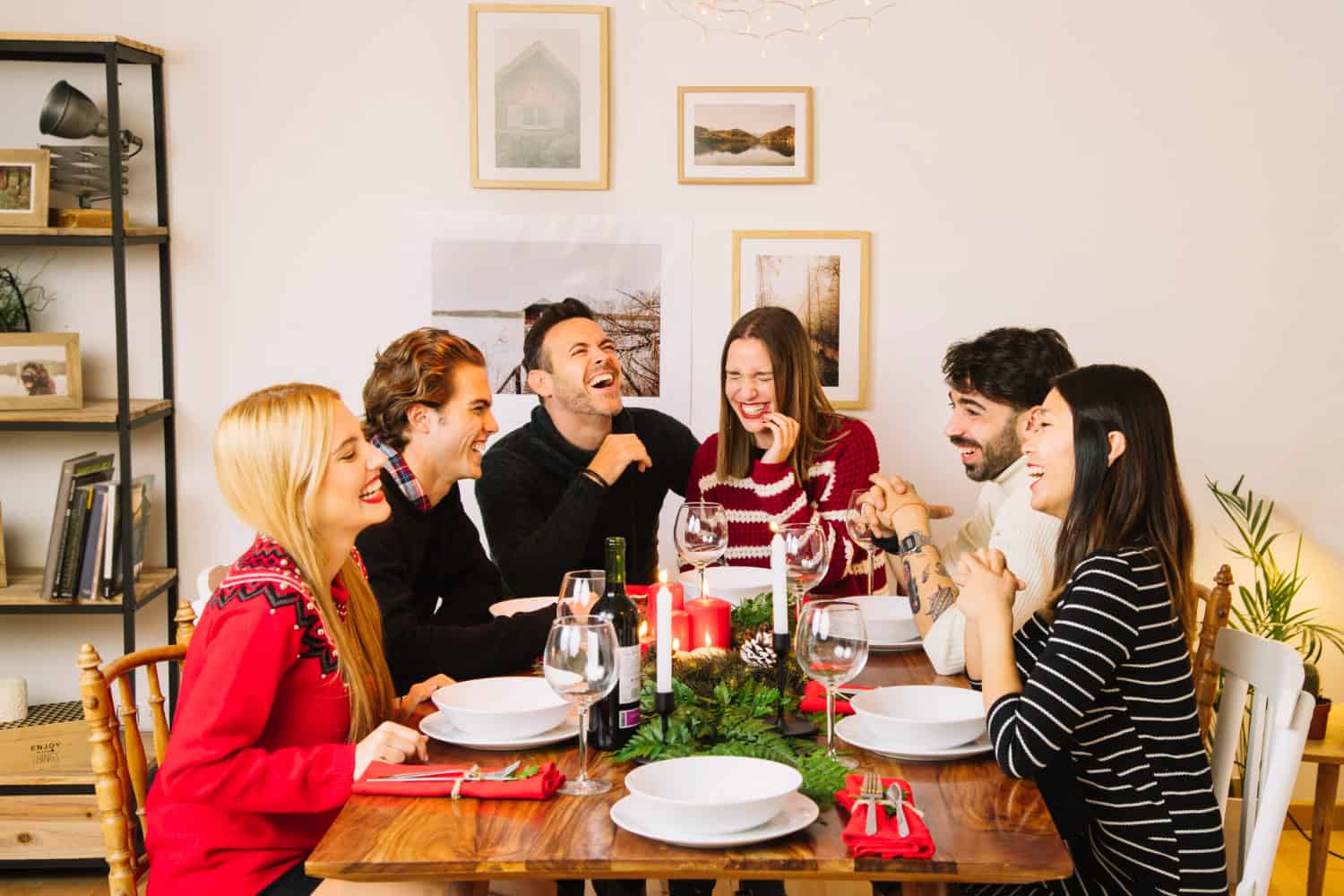
By Jermaine Thomas July 11, 2025
Not all events need a big guest list or a fat budget. In fact some of the most treasured events happen in smaller, more intimate gatherings. Whether it’s a milestone birthday, a backyard wedding or a cozy corporate retreat, smaller events offer more control, a personal touch and surprisingly delicious food – without breaking the bank.
For many the challenge is in balancing quality with affordability. Guests expect great food and thoughtful presentation and hosts don’t want to look like corners were cut. That’s where strategy comes in. Knowing how to get the most out of a modest budget while delivering flavour and finesse is key. This article will share practical tips, smart strategies and creative catering ideas to make sure your next small event delivers on taste and experience.
From menu planning and sourcing to presentation and service formats we’ll look at how intimate event catering can be both budget friendly and indulgent. The goal is simple: create an event that feels luxurious without overspending, using techniques that elevate the food and atmosphere in meaningful ways.
Understanding the Shift Toward Intimate Gatherings
In recent years, there has been a visible shift toward downsized celebrations. People are increasingly choosing quality time with a select group over large-scale events. This change in mindset has opened up new possibilities for catering small events with flair and intention.
Why Less Can Be More
Intimate gatherings naturally allow for greater personalization. From customized menus to bespoke décor, small events give hosts the opportunity to create an experience that feels truly reflective of their style. They also offer flexibility in budget allocation, allowing more to be spent per guest if desired.
Post-Pandemic Preferences
The COVID-19 pandemic reshaped how people think about gathering. Even in a post-restriction world, many prefer the comfort, safety, and manageability of smaller settings. Caterers and event planners have adapted by offering specialized packages for micro-weddings, private dinners, and boutique parties, emphasizing intimate event catering that doesn’t compromise on presentation or flavor.

Crafting the Right Menu for Small Groups
Choosing the right menu is one of the most impactful ways to manage costs while still impressing guests. With a smaller headcount, there is more room to be thoughtful about selections and reduce waste.
Focus on Seasonal and Local Ingredients
Using seasonal produce and locally sourced items reduces costs and elevates freshness. Seasonal items are generally more affordable and flavorful, helping you design a menu that is both economical and enticing. A farm-to-table approach also resonates with today’s sustainability-conscious guests.
Quality Over Quantity
In large events, quantity often trumps quality. But for smaller gatherings, you can afford to be more selective. Instead of multiple mediocre dishes, focus on a few standout items that leave an impression. A signature main, a carefully paired side, and a memorable dessert can do more than a sprawling but forgettable buffet.
Dietary Flexibility
With fewer guests, it becomes easier to accommodate specific dietary needs. Offering vegetarian, gluten-free, or allergen-conscious options is not just thoughtful, it avoids waste by ensuring everyone has something they can eat. This makes the event more inclusive and efficient.
Presentation Matters Just as Much as Taste
Appearance matters. Even simple food can feel fancy when plated creatively or served differently. For budget-friendly party food, how it looks is just as important as what’s on the plate.
Think Outside the Box
Instead of a full sit down meal, consider a tapas or grazing board format. These reduce labor and setup time and create a social, shared experience. Elegant small bites can be more affordable and flexible than full entrées.
Invest in Details, Not Luxuries
You don’t need crystal glassware or 5 course service to impress your guests. Instead focus on details that elevate the atmosphere: real linens, handcrafted signage, curated playlists and coordinated tableware. These are cost effective but have a big impact.
Use Themed Serving Ideas
Themed serving helps tie the food into the overall event. From rustic wooden boards for a country feel to sleek white ceramics for modern minimalism, the right serving format enhances the overall vibe and experience.
Smart Sourcing and Vendor Negotiations
One of the best ways to reduce costs without reducing quality is by being strategic with your vendors. Caterers, florists, and even rental companies often have flexible offerings for smaller events.
Ask About Custom Packages
Many vendors have minimums but are willing to adjust services for smaller bookings, especially during off-peak times. If you are transparent about your budget and expectations, you may be able to negotiate a custom catering small events package that fits your needs.
Consider Local Businesses and Artisans
Rather than going through large event companies, look for small-scale chefs, bakers, or florists who specialize in boutique experiences. These vendors often provide personalized service, better prices, and more room for customization.
Bulk with Control
Buying ingredients in bulk does not mean you must cook yourself. Some caterers allow you to source key ingredients and only charge for preparation, significantly cutting costs. This hybrid model is ideal for those who want fresh food with minimal effort.
Choosing Cost-Effective Service Styles
The service format of your event directly affects labor costs and overall spend. Making intentional choices here can stretch your budget while enhancing guest experience.
Buffet vs Plated vs Stations
Buffet-style service usually requires fewer staff and allows guests to choose what they want, reducing food waste. Plated meals can feel more formal but come with higher labor requirements. Food stations strike a balance, offering variety and interaction without the need for full table service.
Self-Serve with Supervision
For very small groups, a supervised self-serve station (like a taco bar, pasta station, or salad counter) can provide variety and fun. You control portions and guests enjoy personalization, all with minimal staff.
Family-Style Sharing
Family-style dining brings a communal touch to the table. It reduces the number of dishes per person but enhances the overall experience. It also fosters conversation and connection, making it ideal for intimate celebrations.
Maximizing Value with Limited Budgets
Hosting on a budget doesn’t mean cutting corners – it means prioritizing what matters. Here are some ways to feel like you’re hosting a high-end event without breaking the bank.
Time It Right
Brunch or lunch events are often cheaper than dinner. Daytime menus are lighter and allow for simpler set ups which means you can save on food, lighting and even entertainment.
Limit the Bar Without Limiting the Fun
Alcohol can eat up a big chunk of any event budget. Instead of a full open bar consider a signature cocktail, a curated wine list or a BYOB policy where allowed. Presentation and moderation are key to keeping the vibe high.
Combine Roles Creatively
Hire multi-tasking vendors. For example a DJ who can also emcee or a photographer who provides a digital guestbook. These hybrid vendors reduce headcount and offer dual benefits.
Making DIY Work Without Losing Elegance
A well-planned DIY approach can enhance the charm of a small gathering while lowering costs. However, the trick is knowing where to DIY and where to leave it to the pros.
Choose Impactful DIY Elements
Décor, signage, or favors can often be made at home without much expense. Avoid DIY for critical items like food safety, lighting, or major installations unless you have experience.
Tap Into Community Talent
Have a friend who bakes, or a cousin who plays guitar? Small events allow you to involve personal connections in a way that’s meaningful and memorable. Just ensure expectations are clear to keep things stress-free.
Rent What You Don’t Own
Renting glassware, linens, or serving trays for a day is far cheaper than buying new. Most event rental companies cater to all sizes, and they help maintain the visual quality of your gathering.
Catering with a Personal Touch
Smaller gatherings offer the perfect opportunity to align food with the event’s personal significance. A menu that reflects the host’s background, culture, or favorite flavors can create a deeper emotional connection.
Storytelling Through Food
Incorporate family recipes or regional dishes that carry personal stories. Whether it’s a grandmother’s curry or a dessert from the couple’s first date, these touches are often more appreciated than generic gourmet meals.
Interactive Food Elements
Live cooking stations, DIY dessert bars, or even handwritten menu cards can add interactivity and charm. They turn food into an experience rather than just a necessity.
Thank-You Bites
Send guests home with a small edible memento like mini jars of local honey, hand-packed cookies, or a snack pack with a thank-you tag. These parting gestures enhance the impression of thoughtful hosting without being expensive.

Sustainability and Mindful Hosting
Budget friendly options align with sustainable practices. Waste reduction, local sourcing and intentional consumption help the planet and your event’s purpose and appeal.
Reduce Leftovers with Smarter Portions
With smaller headcounts it’s easier to calculate portions and reduce waste. Work with caterers who support waste reducing practices like reusing serving containers or compostable dinnerware.
Eco Friendly Decor and Packaging
Use cloth napkins instead of disposables and rent dishware. If guests are taking food home use biodegradable boxes instead of plastic. These little decisions speak volumes about the kind of host you are.
Local and Seasonal Menus
Choose local vendors and seasonal food items and support the local economy and reduce your event’s footprint. It also often results in better tasting, fresher food that requires less transport and storage.
Conclusion
Hosting a small event can be more enjoyable and memorable than a large one. With smart catering, thoughtful planning, and attention to detail, you can create a warm, flavorful, and budget-friendly gathering. It’s the heart and taste of the experience; not the size; that guests will remember.
FAQs
What’s the best menu for a small gathering on a budget?
Focus on seasonal ingredients, one or two standout dishes, and lighter fare like brunch or tapas. Simplifying your offerings allows you to prioritize quality without overspending.
How many staff do I need for a small event?
For very small gatherings, one or two staff members may be enough if you’re doing buffet or self-service. Family-style setups may also require minimal staffing depending on the complexity of service.
Can I still have a beautiful event without a planner?
Yes, with the right vendors and a bit of research, small events are very manageable. Many catering services offer coordination support, and rental companies can help with logistics.